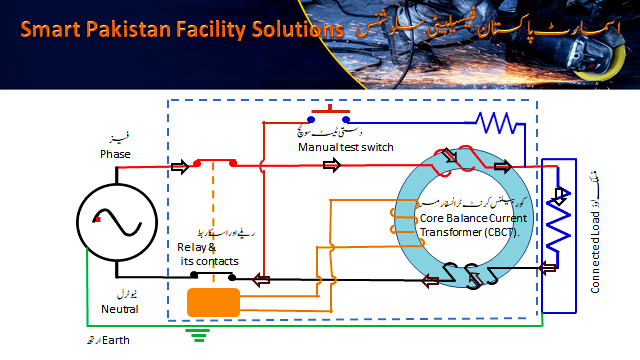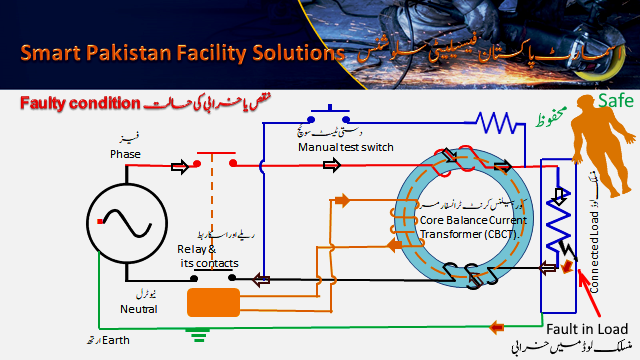
What is Earth Leakage Circuit Breaker (ELCB) or Ground Fault Circuit Interrupter (GFCI)?
An Earth-leakage circuit breaker (ELCB) is safety switchgear used to prevent shock from electrical installations with high earth impedance. It detects small voltages segments on the metal enclosures of electrical equipment and disconnects the circuit if the voltage level exceeds from danger limit.
What is the Purpose of ELCB?
The main purpose of ELCB is to detect Earth current leakages and injury is prevented of human and animals from electrical shocks and electrical fires can also be prevented in case of short Circuit.
Basic Principle of Operation;
The heart of ELCB is a three winding current transformer, which has two primary windings and one secondary winding also known as residual current sensing coil. In total It is called the Core Balance Current Transformer (CBCT), along with other mechanism.
Basically ELCB is a protective relay which gives protection against the earth leakage current, and it is used to save human lives from electric shock but it cannot be used as over current protection.

let’s see how actually this works, and save us in a hazardous condition, above is the basic circuit diagram of ELCB, The dotted area is the ELCB portion, it consists of a circuit breaker relay and the core balance current transformer (CBCT), as stated it is three winding current transformer, two primary windings, both phase or line current and neutral current run through these windings respectively, third one is residual or balance current coil, connected to protection relay coil, a test button, by pressing which test the ELCB, whether it is working or not.
Apart from that, in red is line conductor, in blue is neutral, and in green is the earth conductor, the load which represents our household equipment or Electrical circuit and the power source.
Normal working Scenario;
Let’s take the first scenario in which everything works just fine, there is no fault, taking circuit above in consideration,
In this case, what happens, is that the current entering from the phase conductor will be equal to the current leaving from the natural conductor ( shown with black & brown arrows), but the direction of both will be opposite as per Fleming’s law, the flux will induce in the conductor, but as the magnitude is same and the direction is opposite, they will cancel the effect of each other, in this case there will be no residual flux in the CBCT , this no flux induction scenario resulted no flux link to the residual current sensing coil, relay contacts intact, and the system is working just normal.
Fault in the Load Scenario;

If there is a fault as show in circuit, some part of equipment enclosure or electric circuit will be grounded, now the current entering from phase or line conductor will divide in to two parts, one part starts to flow via earth wire(equipment ground) as indicated in orange color arrows and other part will remain flows via neutral conductor, in this case, neutral current quantity will now less than the phase current.
At this time, the difference in phase and neutral current will induce some necessary flux in the core, which then link with the residual current sensing coil.
Now this current will work as signal for relay and relay will operate to break the electric supply of the faulty or hazardous equipment or circuit, ultimately human or animals can be prevented from type of faulty condition in case of any human comes in contact with this hazard.
Its detail functionality is further explained in below video,
